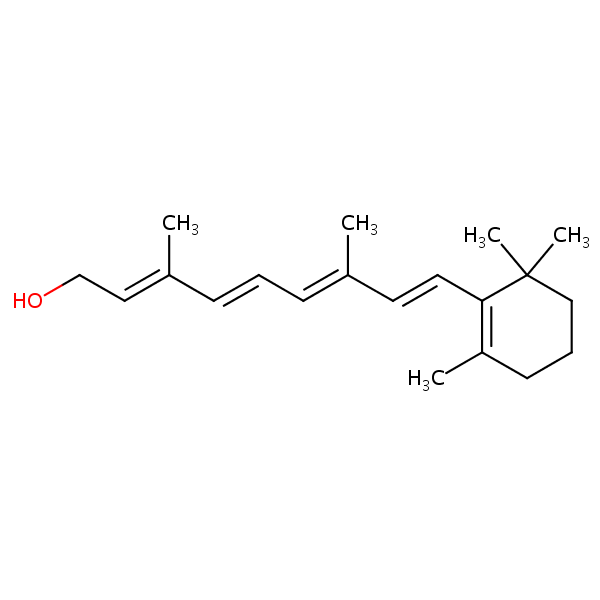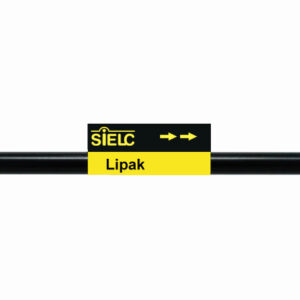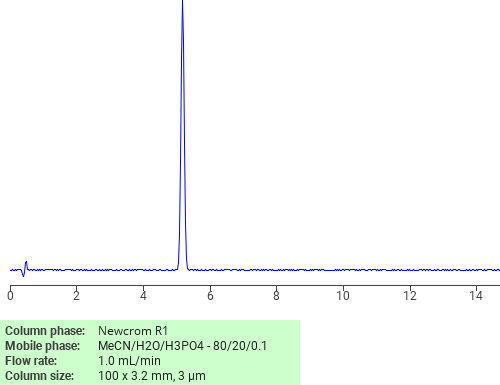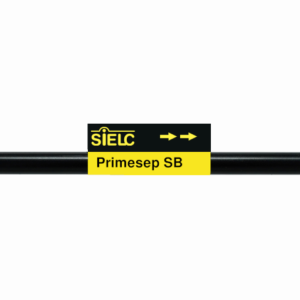| CAS Number | 68-26-8 |
|---|---|
| Molecular Formula | C20H30O |
| Molecular Weight | 286.460 |
| InChI Key | FPIPGXGPPPQFEQ-OVSJKPMPSA-N |
| LogP | 5.68 |
| Synonyms |
|
Applications:
HPLC Method for Analysis of Retinol and Synthetic Derivatives Analysis on Lipak Column
November 25, 2024
HPLC Method for Retinol (Vitamin A), Retinol acetate, Retinol palmitate on Lipak by SIELC Technologies
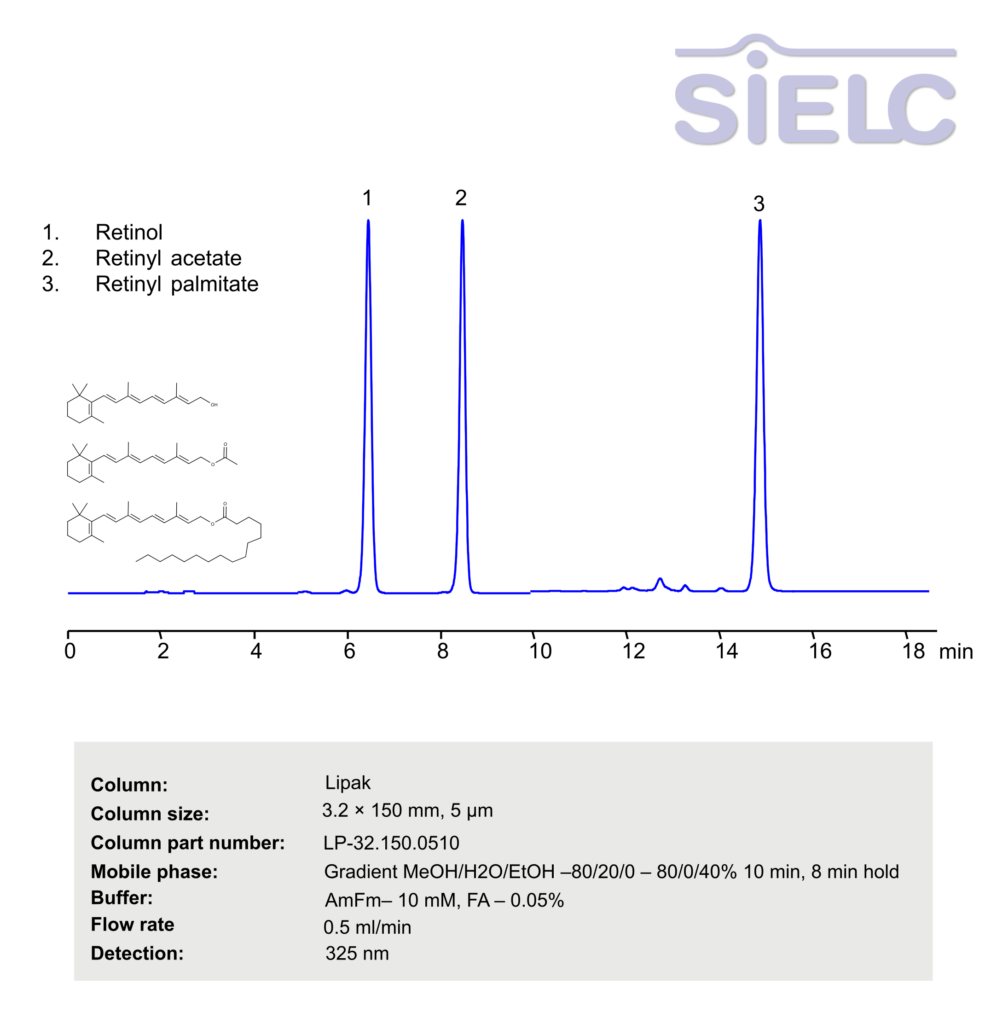
High Performance Liquid Chromatography (HPLC) Method for Analysis of Retinol (Vitamin A), Retinol acetate, Retinol palmitate
Retinol, also known as vitamin A1, and its synthetic derivatives are widely studied for their impact on skin health, cellular regeneration, and their role in treating various skin conditions like acne, wrinkles, and hyperpigmentation.
Retinol (Vitamin A), Retinol acetate, Retinol palmitate can be retained, and analyzed using a Lipak mixed-mode stationary phase column. The analysis utilizes an gradient method with a mobile phase consisting of water, methanol (MeOH), Ethanol (EtOH), ammonium formate and formic acid as a buffer. Detection is achieved using 325 nm
| Column | Lipak, 3.2 x 150 mm, 5 µm, 100 A |
| Mobile Phase | Gradient MeOH/H2O/EtOH –80/20/0 – 80/0/40% 10 min, 8 min hold |
| Buffer | AmFm– 10 mM, FA – 0.05% |
| Flow Rate | 0.5 ml/min |
| Detection | 325 nm |
| Class of Compounds | Retinoids |
| Analyzing Compounds | Retinol (Vitamin A), Retinol acetate, Retinol palmitate |
Application Column
Retinol acetate
Retinol palmitate

Separation of Retinol on Newcrom R1 HPLC column
February 16, 2018
Retinol, also known as Vitamin A1, is a vitamin essential for life. It is often supplemented, although that may be dangerous. Retinol can be analyzed by this reverse phase (RP) HPLC method with simple conditions. The mobile phase contains acetonitrile (MeCN), water, and phosphoric acid. For Mass-Spec (MS) compatible applications the phosphoric acid needs to be replaced with formic acid. Smaller 3 µm particle columns are available for fast UPLC applications. This liquid chromatography method is scalable and can be used for isolation of impurities in preparative separation. It also suitable for pharmacokinetics.
Application Column
Newcrom R1
The Newcrom columns are a family of reverse-phase-based columns. Newcrom A, AH, B, and BH are all mixed-mode columns with either positive or negative ion-pairing groups attached to either short (25 Å) or long (100 Å) ligand chains. Newcrom R1 is a special reverse-phase column with low silanol activity.
Select optionsHPLC Analysis of Ascorbic Acid, Retinol (Vitamin A) and Vitamin E acetate in ACE Serum Active Ingredients
October 14, 2010
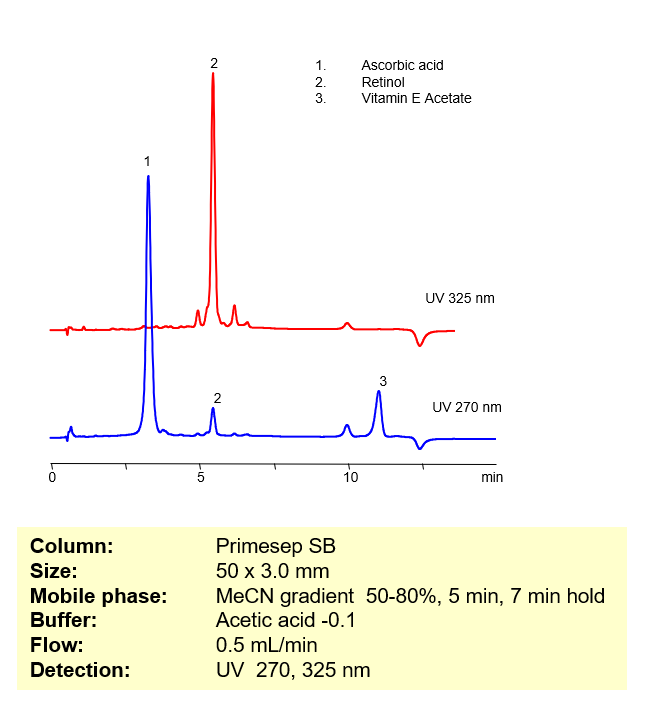
Mixed-mode HPLC columns allow for separation of compounds with drastically different properties. In this application, highly hydrophilic ascorbic acid is retained and separated from highly hydrophobic retinol (Vitamin A) and Vitamin E Acetate. Ascorbic acid is retained by anion-exchange mechanism and hydrophobic compounds are retained by reversed-phase mechanism. Compounds are monitored by UV detection. Mobile phase is compatible with LC/MS and method can be used to monitor basic and acidic compounds in bio-fluids (serum, blood, urine, saliva, etc.)
Retinol (Vitamin A) and Vitamin E Acetate
| Column | Primesep SB , 3.0×50 mm, 5 µm, 100A |
| Mobile Phase | MeCN/H2O |
| Buffer | Acetic Acid |
| Flow Rate | 0.5 ml/min |
| Detection | UV 270, 325 |
| Class of Compounds |
Acid, Vitamin B₆, Hydrophobic, Ionizable |
| Analyzing Compounds | Ascorbic acid (Vitamin C), Retinol (Vitamin A) and Vitamin E Acetate |
Application Column
Primesep SB
Column Diameter: 3.2 mm
Column Length: 50 mm
Particle Size: 5 µm
Pore Size: 100 A
Retinol (Vitamin A)
Vitamin E Acetate

